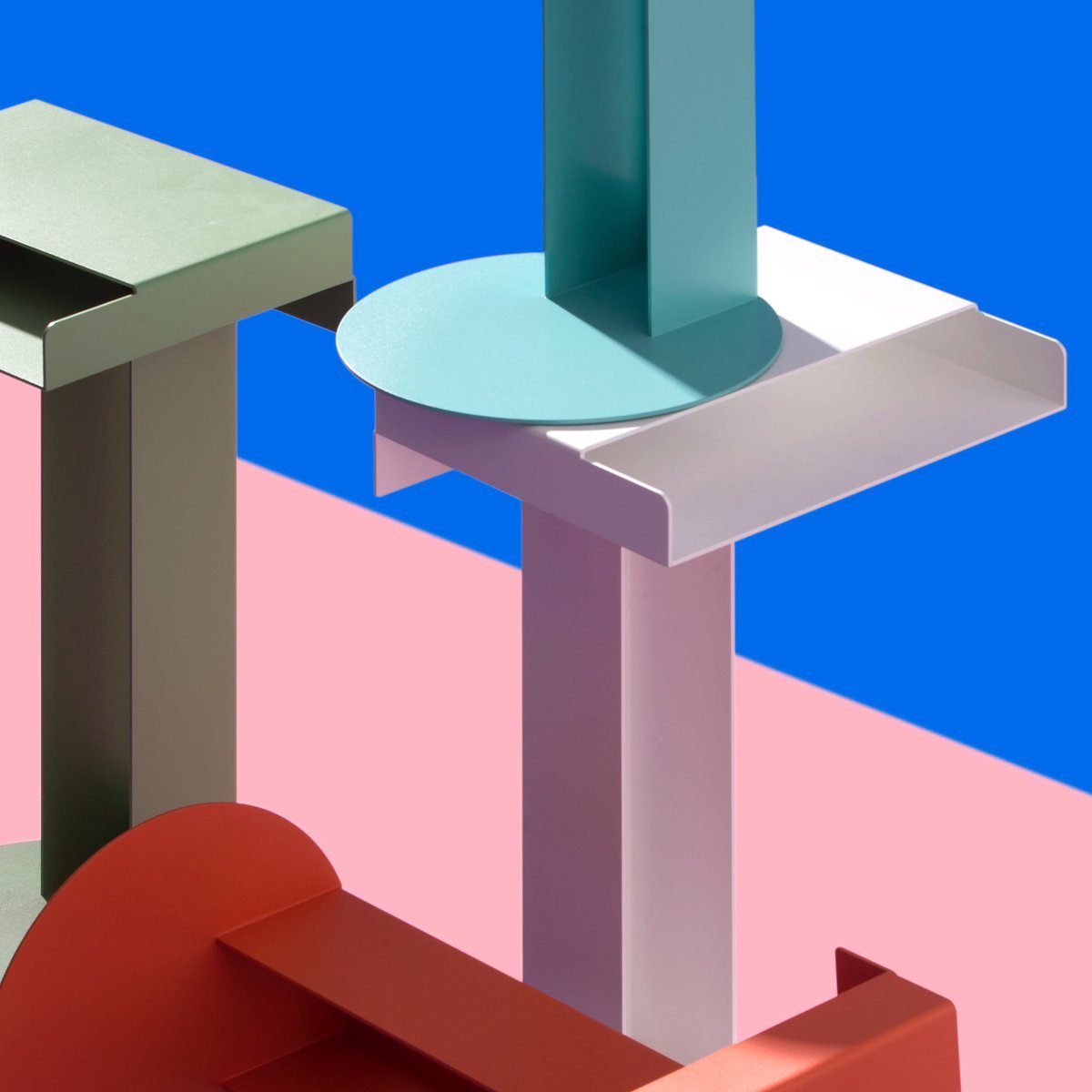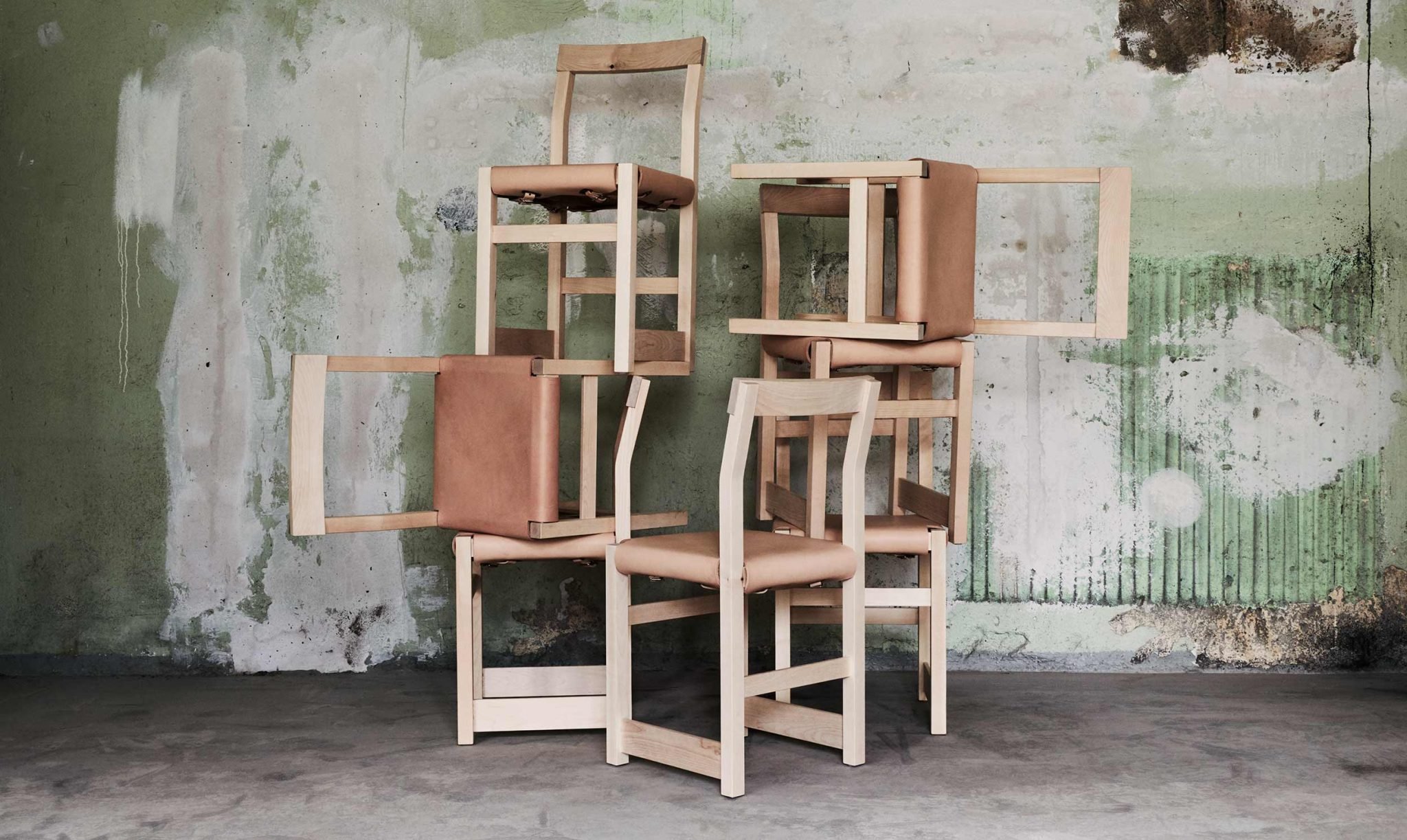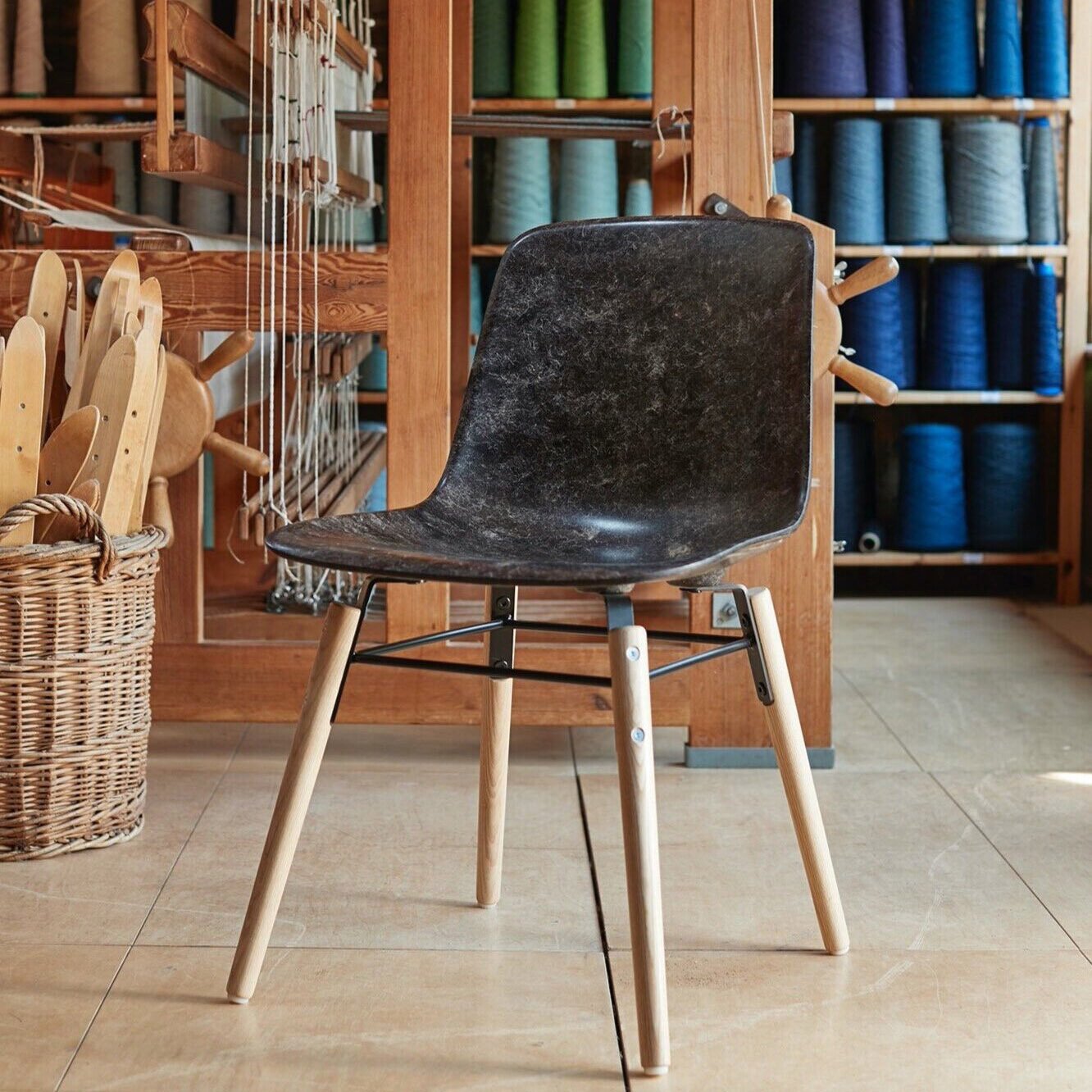alki & the bioplastic kuskoa bi chair
Introducing the Kuskoa Bi, the first bioplastic chair to be manufactured using organically sourced polymer by the Basque furniture company Alki.
Published On: 5/09/2017
Tucked away at the foot of the Pyreness in Basque Country, is the village of Itsasu and the Alki workshop. Alki, meaning chair in Basque, is a small workshop that combines ancestral traditions with modern technology. Today with the help of creative director Iratzoki, their brand resonates craftsmanship, simplicity and longevity. Fully aware that their work has a direct impact on the surrounding environment, they sought out new methods of production resulting in the first bioplastic chair manufactured using organically sourced polymer.
Designers & Concept
Designed by the industrial design studio Iratzoki Lizaso, the Kuskoa Bi chair was introduced to the design industry at the Maison & Objet 2015. Their goal was to manufacture a chair with minimal impact on the environment. The concept and execution of the chair speaks to Alki's manifesto; "being sustainable is not an option, it is the only way forward".
Design
Alki’s bioplastic is developed from renewable plant-based sources such as beet, corn starch, sugarcane etc. Materials for the chair consist of bioplastic for the shell with an upholstery option, and solid oak for the legs. The oak comes from sustainably managed forests and most upholstery is made from 100% natural materials such as wool, natural fibres, linoleum etc. Other options for the base include metal legs with or without castors.
Below: Photos depicting the manufacturing process from start to finish
1) Research: Searching for the best resources
3) Granules: Resources transformed into pellets
2) Resources: Plant-based renewable resources chosen such as beet, corn starch, sugarcane
4) Form: Tooling for the Kuskoa Bi chair
5) Final Product: Kuskoa Bi available in a variety of finishes and styles
Why do we use the term Bioplastic?
We know the word 'Bio' means that is it good for the environment and ourselves. The word itself is derived from the word 'biological' which is of or relating to biology or to life and living process. But what about plastic? The term 'plastic' is used, as bioplastic has similar characteristics and properties to plastics derived from non-renewable fossil fuels. It can be injected and extruded and thermoformed.
An additional environmental advantage of bioplastic lies in its reduced carbon footprint and additional waste management options. Since the Kuskoa Bi is made from bioplastic, you may think its material can be disposed of like your bioplastic compostable bags. On the contrary, this material needs an industrial process for it to be biodegradable.
Encouragingly, there is a bioplastic alternative for almost every conventional plastic material. It is currently being used in several industrial sectors such as packaging, consumer electronics, automotive and household appliances.
Above: Alki at the Maison & Objet in 2015 launching the Kuskoa Bi chair
Thanks to Alki, this innovative material has been brought to the forefront in the furniture industry. By providing consumers with environmentally responsible choices, we are able to obtain better solutions for our interior needs. We can also feel good about it too.
Catch Alki at both sides of the channel this September 2017:
Maison & Objet September 8th-12th in Paris
100% Design in London September 20th to 23rd
If you liked this article, you'll want to read about the Berlin company Kaffeeform that produces coffee cups made from coffee grounds and bioplastic - click here.
- - -
Did You Know . . .
First known bioplastic was discovered in 1926 by French researcher Maurice Lemoigne.
Since the early 20th century, there has been an explosion in the development and use of plastics, and their utility and importance have become so great that it is difficult to imagine modern life without them. Virtually all current plastics are derived from petroleum through chemical extraction and synthesis.
The petroleum crisis in the mid-1970s brought renewed interest in finding alternatives to petroleum-based products.
Today we see bioplastic being widely used in several industries. We know it is the way forward for our future, the environment, and marine life.
It can take up to 400-1000 years for a plastic bottle to degrade where as bioplastic bags used for composting naturally biodegrade within a timeframe of 3-5 months.
Of all the plastics ever made, only nine percent have been recycled.
Half of all plastic manufactured becomes trash in less than a year.
- - -
References:
http://www.european-bioplastics.org/bioplastics/waste-management/
http://www.european-bioplastics.org/market/applications-sectors/
http://www.european-bioplastics.org/bioplastics/materials/




















